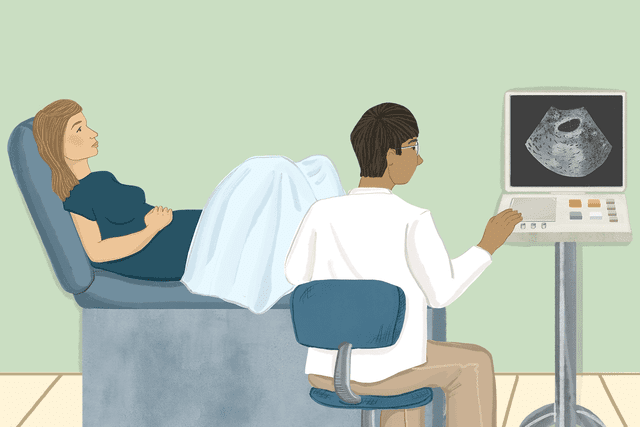What to Know About the Fetal Pole and Early Pregnancy Ultrasound
In early pregnancy, the fetal pole is the first stage of embryonic growth visible on an ultrasound. Find out what it means when the fetal pole isn't visible.
Medically reviewed by Peter Weiss, MD
The fetal pole, which is also called an embryo, is one of the initial phases of pregnancy. It's typically the first stage of embryonic growth visible in an ultrasound. If the embryo isn't far enough along to have developed into a recognizable fetus, the ultrasound technician will look to identify a fetal pole.
Many providers schedule an early ultrasound soon after you see a positive result on a home pregnancy test. Knowing more about the fetal pole can help you to feel more prepared for your first prenatal visit. Here's what you need to know about fetal poles and their development.

Jessica Olah
What Is the Fetal Pole?
The fetal pole appears as a thick area alongside the yolk sac, which is a source of nourishment at the beginning of pregnancy. It's a preliminary structure that ultimately develops into a fetus.
Curved in appearance, the fetal pole has the head of the embryo at one end and a tail-like structure at the other. The distance between these two points is used to measure the crown-to-rump length (CRL), which helps determine how far along you are in your pregnancy.
Related: What Is a Zygote?
What If a Fetal Pole Has No Heartbeat?
Sometimes a health care provider will be able to locate a fetal pole with a transvaginal ultrasound, but discover that there's no heartbeat. A fetal pole with no heartbeat that has a crown-rump length of more than 7 millimeters is considered a missed miscarriage.
A missed miscarriage—sometimes called a silent or delayed miscarriage or early embryonic demise—occurs when the embryo has died or failed to develop, but the body has not miscarried. The ultrasound scan shows an amniotic sac with an embryo inside, but there's no heartbeat.
Even though you may have had few, if any, signs that something was wrong, without a heartbeat, the pregnancy isn't viable. In this situation, your health care provider will indicate whether you've experienced a missed miscarriage and what the next steps will be.
Reasons for a Missing Fetal Pole
There are a few reasons why the fetal pole may not be visible on an early ultrasound despite getting a positive pregnancy test.
It's too early
The fetal pole becomes visible somewhere between 5 1/2 and 6 1/2 weeks of gestational age (typically determined based on the date of the last normal menstrual period). Any small error in dating the pregnancy can throw off an ultrasound interpretation.
For example, incorrectly remembering when you last had your period can change what your health care provider expects to see on an ultrasound. Health care providers typically use the first day of your last period (LMP) to date your pregnancy.
Similarly, if you have an irregular cycle or do not always ovulate 14 days after you begin each period (an assumption based on the 28-day average cycle), your pregnancy may not technically be five to six weeks along—even if it has been five or six weeks since your last menstrual period. Because a normal menstrual cycle can range anywhere from 21 to 35 days, it's not uncommon to ovulate much earlier or later than cycle day 14.
If your provider suspects that it's just too early into your pregnancy to detect a fetal pole, they may ask you to come back for a follow-up ultrasound a week or two later.
The pregnancy is not viable
If you have a follow-up ultrasound and there's still no sign of a fetal pole, a miscarriage has likely occurred.
In some cases, the empty gestational sac can remain intact for a number of weeks before miscarriage symptoms appear. It may even continue to grow, as in the case of a blighted ovum.
Other times, a miscarriage may be diagnosed by a single ultrasound that shows no fetal pole, such as if a gestational sac is larger than 25 millimeters but there's no accompanying fetal pole.
If you're confused by your provider's diagnosis, ask for more information. It's important that you understand what has occurred. Going home with unanswered questions contributes to stress and frustration.
For more Parents news, make sure to sign up for our newsletter!
Read the original article on Parents.

